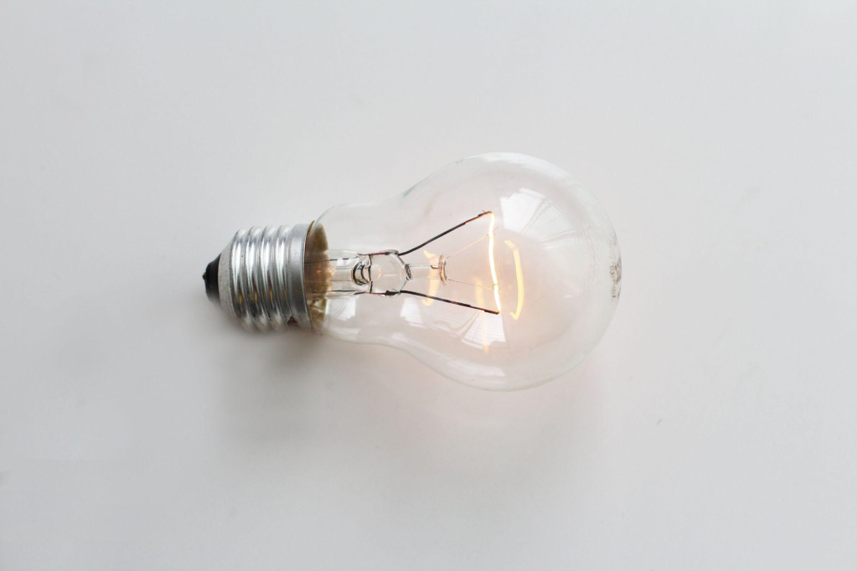Electricity is defined by the movement of electrons. Electrons are charged particles that carry an electric charge — either positive or negative– that govern their path through space.
Electrons in an atom’s nucleus have an extremely strong force of attraction to protons, while those in its outer shells don’t share this strength and can easily be dislodged from their orbits by protons’ attraction.
What is an atom?
Electricity is the flow of electrons, and to understand it we must first comprehend what an atom is. An atom is the fundamental building block of all matter in this world–from your body to the chair you’re sitting on–so tiny that millions could fit onto the head of a pin!
An atom contains three basic components: protons, neutrons, and electrons forming the nucleus while electrons act like mini clouds around it that attract positively charged protons within its nucleus and hold them together.
An atom’s outermost electron shell determines how it interacts with other atoms.
If its outermost shell contains the maximum number of electrons possible, it is considered neutral; otherwise, it will try to fill its emptiness by either absorbing or losing electrons from nearby atoms. This process is known as chemical bonding.
When multiple elements share electrons through chemical bonding processes, molecules form that contain all three types of atoms from all four elements involved.
An atom’s electrical charge is determined by its protons and neutrons as well as the number and type of electrons it contains. A positive charge contains equal numbers of protons and electrons while negative charges contain more electrons than protons.
Electric fields are essential to comprehending electricity. An electric field describes the force exerted between charges in space, measured in volts. A field can be created either with positive or negative test charges and it will push or pull depending on the direction and magnitude of the electric charge it possesses.
More electrons on an atom equals a stronger electric field. A large concentration of electrons can exert considerable force upon neighboring atoms with equal positive or negative charges, exerting pressure upon them even though their charges match exactly. Copper wire is an excellent conductor of electricity as its resistance to electron movement is minimal.
What is an electron?
An electron is a negatively charged subatomic particle that can either bind itself to an atom, or exist free.
An atom contains three primary types of particles called protons, neutrons and electrons – with protons have positive charges located within their nucleus while electrons move freely around its outside in circular orbits with negative charges that balance out those positive charges from protons to maintain its equilibrium and keep things neutral.
An electron can be dislodged from its orbit with sufficient force; the energy required to make this transition equals the electric potential difference between its initial position and the point at which it leaves – measured in volts.
Electrons are so tiny that millions of them could fit onto the head of a pin, yet they possess incredible power – something we associate with electricity.
The first practical use for electricity was in 1837 with the electrical telegraph that allowed for global communications between people across various distances and time zones. Today we use electricity to heat and cool our homes, cook meals, run computers and televisions and power our cars – an electric current is everywhere and in every aspect of daily life! You can visit https://bestestrøm.no/hva-er-strøm/ to learn more. This force is an essential part of everyday life.
Electricity is truly amazing; without it, we wouldn’t have gas furnaces to heat our homes. Electricity powers refrigerators that keep food cold; lights the way in darkness and makes appliances work; not to mention, runs cars! We often take it for granted but its value cannot be overstated.
Electricity can also be found in numerous scientific experiments and technologies, including frictional charging (tribology), electrolysis, electrochemistry, battery technologies, welding, cathode-ray tubes, photoelectricity (photovoltaic solar cells) and electron microscopes.
Electricity has long been depicted in popular culture as an unknown and magical force capable of either killing or resurrecting those dead. To ensure safe use of electricity, however, it’s essential that individuals understand it’s functioning.

What is an electric charge?
An electric charge is the basis of electromagnetic force. Electric charges come in two varieties – positive and negative charges – with protons at the nucleus carrying positive charges while electrons orbiting protons carry negative ones.
An excess or deficit in either type leads to static electricity while its lack results in current flow; these two forms of charge can be found throughout nature – from lightning storms and solar cell batteries, through DC power supply lines into light bulbs or radio transmitters and even batteries themselves!
Electrons moving between atoms produce electricity, as do electrons pulled out of their original positions by gravity and electric fields created by nearby charged objects. Magnetism produced by electron movement provides generators with their source of electrical energy; once transferred to devices like motors or lamps it becomes kinetic energy in motion rather than electricity. You can click the link: https://www.britannica.com/science/kinetic-energy to learn more.
Electric charge is a vector quantity with both magnitude and direction; however, unlike vectors it does not follow additional laws like parallelogram or triangle law and cannot therefore be deduced from geometrical forms or vectors. Instead, it behaves more like a scalar quantity, directly proportional to magnitude while inversely related to distance from points nearer the charge.
Electric charge is measured using an SI unit known as the coulomb, named for Charles-Augustin de Coulomb who first proposed his law about like charges repelling one another while opposite charges attract each other. A coulomb represents the charge transported over one second on a conductor carrying one ampere of current.
What is an electrical circuit?
Electric circuits are pathways along which electricity travels. They may be simple or complex, containing multiple elements.
At its core lie an electric circuit’s basic components: power source, conductive materials (typically wires), load and switch. A power source supplies energy which causes current to flow; its energy then transforms itself into light or heat by being transformed through load into other forms. Finally, switches may also be present to start and stop electron flow.
Electrical current does not equate with electric charge. Protons and electrons make up all matter in our universe from stars to us. Electrons possess negative charges while protons hold positive ones; electrons move around an atom’s nucleus at an equal pace attracting each other to balance each charge evenly.
As soon as a battery is charged, protons and electrons inside its structure are brought together by its positive voltage (pressure). This forces electrons around in an ever-widening circle until there is a complete path of conducting material for charge carriers to travel along – this circuit must contain no gaps or breaks for current to flow uninterrupted through it.
Complex circuits may include other electronic devices like transistors, capacitors, and motors connected by wires made of low-resistance metals like copper and aluminum. Resistors often feature in these circuits.
Electricity is harnessed in different ways. Some are more ecologically friendly than others. It is important to do your research and choose the best plan for you.
Found this helpful? Let others know!



